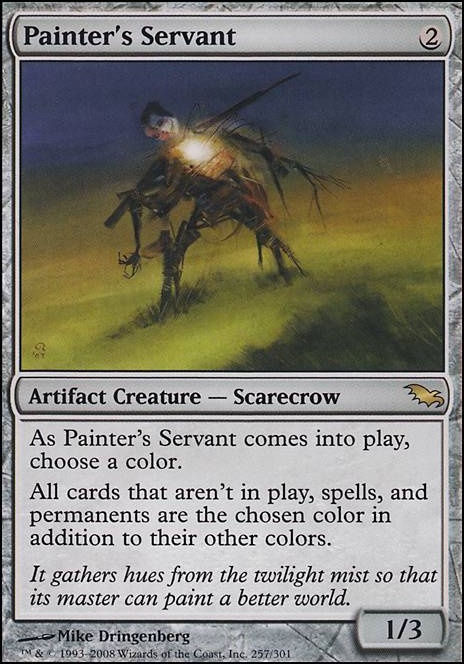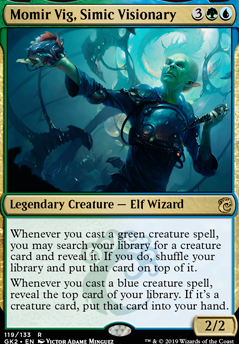Creature (29)
- 1x Arbor Elf
- 1x Birchlore Rangers
- 1x Birds of Paradise
- 1x Boreal Druid
- 1x Collector Ouphe
- 1x Devoted Druid
- 1x Elvish Mystic
- 1x Fyndhorn Elves
- 1x Gilded Drake
- 1x Heritage Druid
- 1x Joraga Treespeaker
- 1x Kiora's Follower
- 1x Llanowar Elves
- 1x Llanowar Tribe
- 1x Nantuko Tracer
- 1x Nettle Sentinel
- 1x Painter's Servant
- 1x Phantasmal Image
- 1x Priest of Titania
- 1x Quirion Ranger
- 1x Reclamation Sage
- 1x Riftsweeper
- 1x Sidisi's Faithful
- 1x Somberwald Sage
- 1x Spellseeker
- 1x Temur Sabertooth
- 1x Vizier of the Menagerie
- 1x Voyaging Satyr
- 1x Wirewood Symbiote
Artifact (6)
Land (29)
- 1x Ancient Tomb
- 1x Botanical Sanctum
-
1x
Breeding Pool

- 1x Cavern of Souls
- 1x City of Brass
- 1x Command Tower
- 1x Flooded Grove
- 1x Flooded Strand
- 1x Forbidden Orchard
- 6x Forest
- 1x Gaea's Cradle
- 1x Gemstone Caverns
- 1x Island
- 1x Mana Confluence
- 1x Misty Rainforest
- 1x Polluted Delta
- 1x Prismatic Vista
- 1x Scalding Tarn
- 1x Tropical Island
- 1x Verdant Catacombs
- 1x Waterlogged Grove
- 1x Windswept Heath
- 1x Wooded Foothills
- 1x Yavimaya Coast
Sorcery (8)
- 1x Finale of Devastation
- 1x Glimpse of Nature
- 1x Green Sun's Zenith
- 1x Merchant Scroll
- 1x Neoform
- 1x Ponder
- 1x Preordain
- 1x Trait Doctoring
Enchantment (5)
Commander (1)
Instant (22)
- 1x Brainstorm
- 1x Counterspell
- 1x Crop Rotation
- 1x Delay
- 1x Dispel
-
1x
Flusterstorm

- 1x Force of Will
- 1x Glamerdye
- 1x Mana Drain
- 1x Mana Leak
- 1x Mental Misstep
- 1x Mind Bend
- 1x Mystical Tutor
- 1x Nature's Claim
- 1x Negate
- 1x Pongify
- 1x Sleight of Mind
- 1x Swan Song
- 1x Veil of Summer
- 1x Whim of Volrath
- 1x Winds of Rebuke
- 1x Worldly Tutor
Sideboard
Instant (3)
Creature (2)
Enchantment (2)
Suggestions
Updates Add
Comments View Archive
Attention! Complete Comment Tutorial! This annoying message will go away once you do!
Important! Formatting tips — Comment Tutorial — markdown syntax
Please login to comment
| Top Ranked |
|
| Date added | 7 years |
| Last updated | 4 years |
| Legality | This deck is not Commander / EDH legal. |
| Rarity (main - side) | 10 - 0 Mythic Rares 39 - 4 Rares 22 - 2 Uncommons 22 - 1 Commons |
| Cards | 100 |
| Avg. CMC | 1.61 |
| Tokens | Ape 3/3 G, Bird 2/2 U, Morph 2/2 C, Spirit 1/1 C |
| Folders | cEDH, Decks I Might Build, Cool Lists, cEDH - Competitive Casual & cEDH, Saved, Simic, Momir Update, other decks, Favorites, cEDH |
| Votes | |
| Ignored suggestions | |
| Shared with | |
| Based on | |
| Views |













